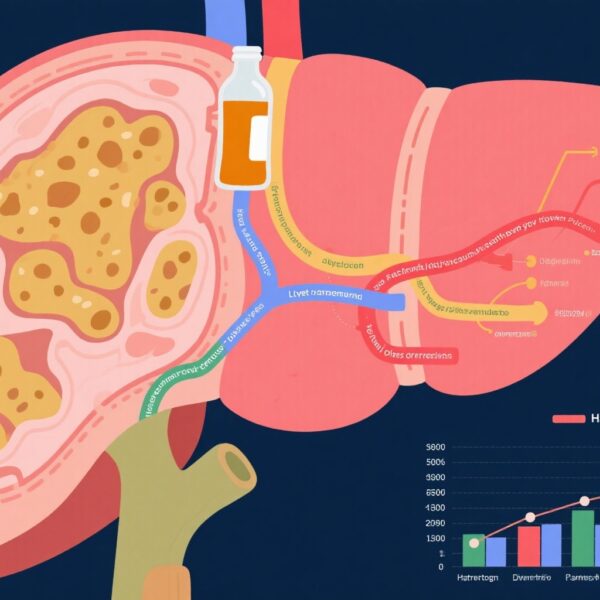Highlights
- From 2010 to 2023, global disability-adjusted life-years (DALYs) rose by 6.1%, but age-standardised rates decreased by 12.6%, reflecting major health improvements despite population growth and ageing.
- Non-communicable diseases (NCDs) remain the leading contributors to global DALYs, with ischaemic heart disease, stroke, and diabetes leading, while communicable, maternal, neonatal, and nutritional (CMNN) diseases saw remarkable declines.
- Risk-attributable DALYs showed near 50% attribution to 88 modifiable risk factors; metabolic risks increased in absolute terms, while environmental and behavioural risks largely declined.
- The data underscore the urgent need for coordinated global efforts addressing rising metabolic risk factors and persistent disparities to sustain health gains.
Background
The Global Burden of Disease (GBD) Study, a pioneering epidemiological effort over the past three decades, quantifies health loss worldwide by measuring diseases, injuries, and attributable risk factors. GBD 2023 expands this effort across 204 countries and territories, including 660 subnational locations, systematically estimating morbidity and mortality parameters from 1990 through 2023. This exhaustive dataset enables nuanced understanding of global health trends and informs priority setting for public health initiatives amid evolving challenges such as demographic changes and the COVID-19 pandemic aftermath.
Key Content
Methodological Framework
GBD 2023 synthesizes over 310,000 data sources—including vital registration, surveys, disease registries, and scientific literature—to estimate years lived with disability (YLDs), years of life lost (YLLs), and DALYs from 375 diseases and injuries. Risk-attributable burdens for 88 modifiable factors were calculated using comparative risk assessment methods alongside disease modelling meta-regression (DisMod-MR 2.1). Stratifications by age, sex, geography, and temporal trends enabled evaluation of changes between 2010 and 2023.
Disease Burden Trends
Globally, DALYs increased from 2.64 billion in 2010 to 2.80 billion in 2023 (6.1% rise), driven primarily by population growth and ageing. Age-standardised DALY rates decreased by 12.6%, indicating substantial improvements in health outcomes when adjusting for demographic shifts.
Non-communicable diseases accounted for the largest share of DALYs, rising from 1.45 billion to 1.80 billion in absolute terms but with a 4.1% reduction in age-standardised rates. Leading NCDs in 2023 included ischemic heart disease (193 million DALYs), stroke (157 million), and diabetes (90.2 million). Notably, age-standardised DALY rates increased for anxiety disorders (62.8%), depressive disorders (26.3%), and diabetes (14.9%) between 2010 and 2023, highlighting mental health and metabolic diseases as growing challenges.
For communicable, maternal, neonatal, and nutritional diseases, DALYs declined by 25.8% in age-standardised rates—falling from 874 million to 681 million—underscoring one of the most significant global public health successes. Key contributors to this decline included diarrhoeal diseases (49.1% reduction), HIV/AIDS (42.9%), and tuberculosis (42.2%). Although COVID-19 temporarily increased the burden from CMNN diseases, levels had returned to pre-pandemic baselines by 2023.
Age-standardised injury-related DALYs also decreased by 15.6% over the study period, reflecting advances in prevention and treatment.
Risk Factors and Attributable Burden
Approximately half of the global DALY burden (1.27 billion DALYs) in 2023 was attributable to 88 modifiable risk factors. The top five risk factors affecting burden were high systolic blood pressure, particulate matter pollution, high fasting plasma glucose, smoking, and low birthweight/short gestation. High systolic blood pressure alone accounted for 8.4% of total DALYs.
Among the three major risk categories, only metabolic risks showed an increase in absolute attributable DALYs (30.7%), despite a 6.7% decline in age-standardised rates. In contrast, behavioral and environmental/occupational risk factors generally exhibited declining attributable DALY rates, such as unsafe sanitation (54.4% decline), unsafe water sources (50.5%), and lack of handwashing facilities (45.2%). Notably, age-standardised attributable DALYs rose for high BMI (10.5%), drug use (8.4%), and high fasting plasma glucose (6.2%, non-significant), signaling growing metabolic risks and substance use concerns.
Demographic and Geographic Variability
Disease and risk factor burdens varied significantly by age, sex, and region. This heterogeneity highlights the necessity for context-specific strategies to address health challenges and ameliorate disparities.
Expert Commentary
The GBD 2023 findings confirm and extend the global epidemiological transition characterized by declining CMNN disease burden and rising non-communicable diseases, particularly metabolic conditions. The reported declines in environmental and behavioral risk exposures affirm the impact of public health interventions, sanitation improvements, and tobacco control measures.
However, the rise in metabolic risks such as hypertension, high BMI, and diabetes presents a formidable challenge. The interaction of these metabolic risks with social determinants and other factors forms a syndemic necessitating integrated, multisectoral approaches. Policy responses should include promotion of healthy diets, physical activity, reduction of air pollution, and equitable healthcare access, including expanding availability of emerging therapies like GLP-1 receptor agonists.
Mental health disorders’ marked increase in disease burden underscores the urgency for improved diagnostic, therapeutic, and preventive strategies globally. The post-COVID recovery phase offers a critical window to reinforce health systems and build resilience against such chronic and complex conditions.
Despite noted successes, the sustainable continuation of health gains is threatened by declining global financial assistance, which disproportionately affects low-income, high-burden regions. Addressing socioeconomic and demographic inequities, enhancing vaccination coverage, and strengthening healthcare delivery remain paramount to maintaining progress.
Conclusion
The GBD Study 2023 provides an unprecedented, comprehensive audit of global health spanning over three decades. The documented duality of decreasing infectious disease burdens and rising metabolic and mental health challenges defines the evolving health landscape.
Sustained investment in evidence-based interventions targeting modifiable risk factors, alongside equitable healthcare access and social determinants of health, is imperative. Coordinated global action addressing the intertwined nature of NCDs, risk factors, and social vulnerabilities will shape future health trajectories.
This report highlights both the remarkable achievements and complex challenges faced in improving global health. It emphasizes opportunities for impactful strategies to enhance life expectancy and quality of life worldwide.
References
- GBD 2023 Disease and Injury and Risk Factor Collaborators. Burden of 375 diseases and injuries, risk-attributable burden of 88 risk factors, and healthy life expectancy in 204 countries and territories, including 660 subnational locations, 1990-2023: a systematic analysis for the Global Burden of Disease Study 2023. Lancet. 2025 Oct 18;406(10513):1873-1922. doi:10.1016/S0140-6736(25)01637-X. PMID:41092926.


